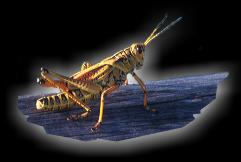Lithuania
Hill of Witches Entrance Sign
 Entrance Sign.jpg) |
Raganu Kalnas translates to Hill of Witches.
Prior to WWI, Witches Hill was the setting for a festival called Jonines (St. John’s Eve). Lithuanians would come from miles away to join in the festival that took place every year on June 24th. There was music, dancing, and, of course, a cool reason for the festival – The Hunting of the Fern Blossom. You see, Witches Hill was always thought to be a magical place. It was a location that was not quite real; legend has it that the hill lies in a dimension between the mystical and the paranormal.It is a hill where the witches, goblins, fairies, fortune tellers, and devils all come together each night after sunset. They party, drink, dance, gamble, and play cards. Most of all, they scare the wits out of any mortals that dare to enter the hill after dark! They roam the hill all night, frightening, confusing, luring, and tormenting any human who crosses their path. The only reprieve for all mortals is when the rooster finally crows at dawn. It was a warning to all party-goers of the pending sunlight that would soon pass over the hill. As soon as the rooster crows, all the magical and mystical beings disappear as if they had never been there at all. However, on St. John’s Night, the shortest night of year, where the sun begins to set around 10:30 at night and starts to rise again before 4 a.m., the Lithuanian people are given a chance to join in the magical world of witches. It is on this night only that humans can go to the hill and be guaranteed that they would always return unharmed. On this one and only night, each year, the fern blossom suddenly blooms at midnight. Legend has it that if you are so lucky to find one, you will be granted unworldly powers. Your powers could be to see the future, talk to the animals, or even learn where ancient secret treasures are to be found around the world. The night is filled with magic and supernatural energy. Although the witches won’t harm the fern blossom hunters, they are waiting in hoping to confuse and scare off any mortals. Their job is to protect the magical blossom; so, beware and don’t talk to any strangers that appear from nowhere, especially witches.
Sadly, after WWI, this magical festival was stopped; however, the witches and devils still continue to meet on Witches Hill and be devilish after dark. Work began in 1979 on the sculpture park, and it now features 80 different wooden carvings from local artists. Painstakingly hand-crafted, each sculpture depicts a popular character from folk and pagan traditions. Today, the hill is covered with over 80 wooden carvings that bring many of the amazing Lithuanian legends and fairy tales to life.
